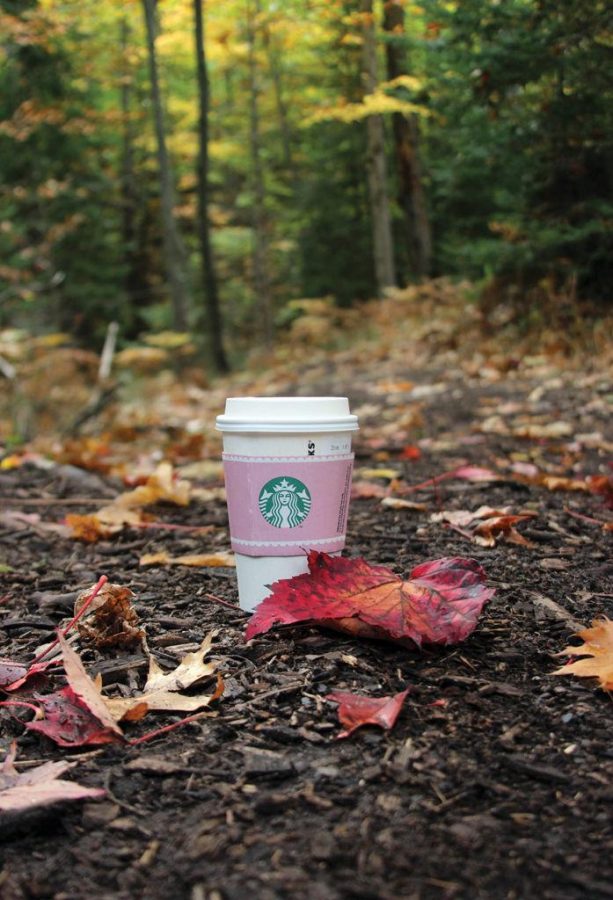Pumpkin spice craze an example of effective marketing
September 30, 2014
Autumn is a wonderful season — it’s undoubtedly the most colorful, and it offers a welcome change from the oppressive heat of August.
But nothing is really quite as “fall” as the pumpkin spice latte (PSL). Since it first entered the market in 2003, the drink has become increasingly more popular each year, earning Starbucks $80 million in revenue last fall, according to Forbes Magazine.
But, what’s most impressive is not the quality or novelty of the drink, but the moves that Starbucks has made to ensure its popularity.
Before diving into the details, let’s take a brief look at the drink’s origins.
While pumpkin spice lattes are now commonly found at most major coffee joints, a Starbucks team led by product manager Peter Dukes developed the company’s version drink in 2003. But it was actually available at smaller stores before Starbucks ever popularized it..
Out of 20 possible flavors, the company chose four drinks to develop for its fall drink lineup, including the PSL. However, as Dukes recalls in an interview with the Seattle Met, when the company surveyed people online about what latte they would be most interested in amongst the four options, the PSL fared the worst.
But, as a result of Duke’s insistence, the company produced it anyway, despite its poor reception. The rest, of course, is history.
Assuming reasonably that the Starbucks team is good at its job, why has the PSL became so wildly popular despite the poor survey results?
The answer lies in the expertise of the presentation and marketing of the product, both by Starbucks and others.
First, only offering the beverage in the fall creates an artificial shortage of the product, propping up demand. No, I’m not talking about the actual PSL shortages that have happened in the past.
Many companies offer products at certain times of the year, for various reasons. Some, like the PSL, are seasonal and make sense on face. For example, a Halloween costume store that operated year-round would undoubtedly be in the red November through September.
It is not this clear cut for others. Take the McRib, for example. Why is it that McDonald’s only offers the sandwich at seemingly random times, creating the need for a website providing the location of branches serving it?
Some have speculated that the sandwich is only offered when pork prices are low enough, allowing McDonald’s to bring in larger profits. Regardless, sales of the McRib certainly benefit from how sparingly it is available.
When the product is reintroduced, it creates excitement in the local area, as fans of the sandwich are able to satisfy their craving. Additionally, since it’s not available for long, people forgo other fast food restaurants in favor of McDonald’s. Burger King’s Whopper is available year-round, so if you can only get a McRib during the next week, McDonald’s will be your choice.
Starbucks creates this same excitement for the PSL, as it is only available in the fall. And, consequently, it has made the drink synonymous with the season.
While reporting on shortages of the sauces used to make the PSL in 2012, the Wall Street Journal interviewed a PSL fan who said, “It just tastes like fall.”
When people aren’t able to get their latte in the fall, severe disappointment ensues. In what reads almost like an article in The Onion, one person who wasn’t able to purchase the drink told the WSJ, “I just left, depressed.”
All of this excitement builds up demand for the PSL that wouldn’t be there if the drink was available year-round, allowing Starbucks to charge higher prices and bring in more revenue.
But, this isn’t the only reason the company can do this. By focusing on creating an environment that mimics a continental coffee shop, Starbucks has convinced its customers that it is a step above its cheaper competitors, like Dunkin’ Donuts and McDonald’s.
As a result, it can charge higher prices for its drinks, as consumers are more willing to pay for higher priced coffee at a notable establishment. Accordingly, Starbucks is certainly able to harness this status to charge higher prices for the PSL come fall.
Without a patent or any sort of intellectual property protection over the product, Starbucks has managed to profit enormously off the drink it developed despite competitors introducing their own version of the drink. Funny how that works.
Email Thomas at [email protected]



